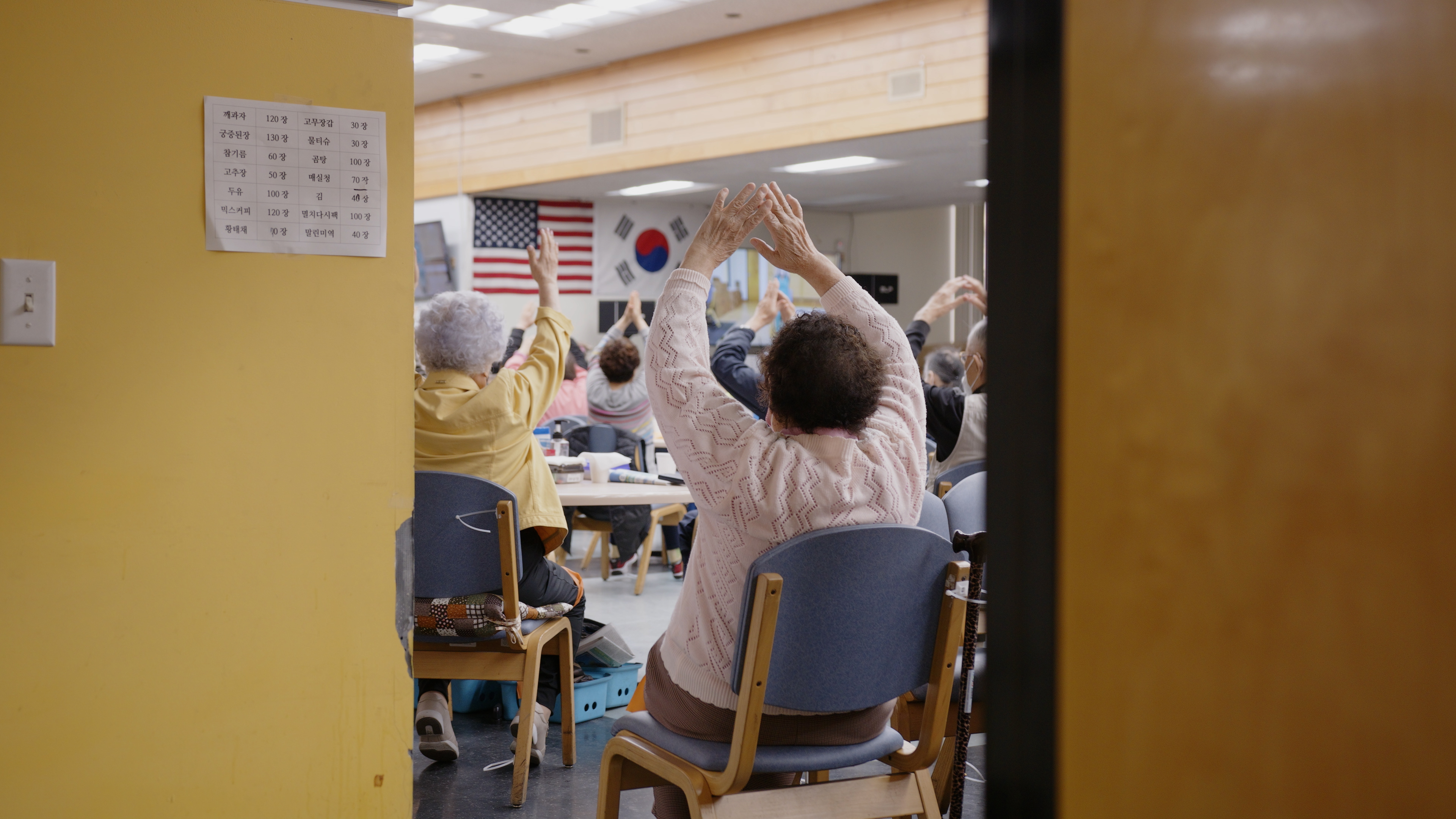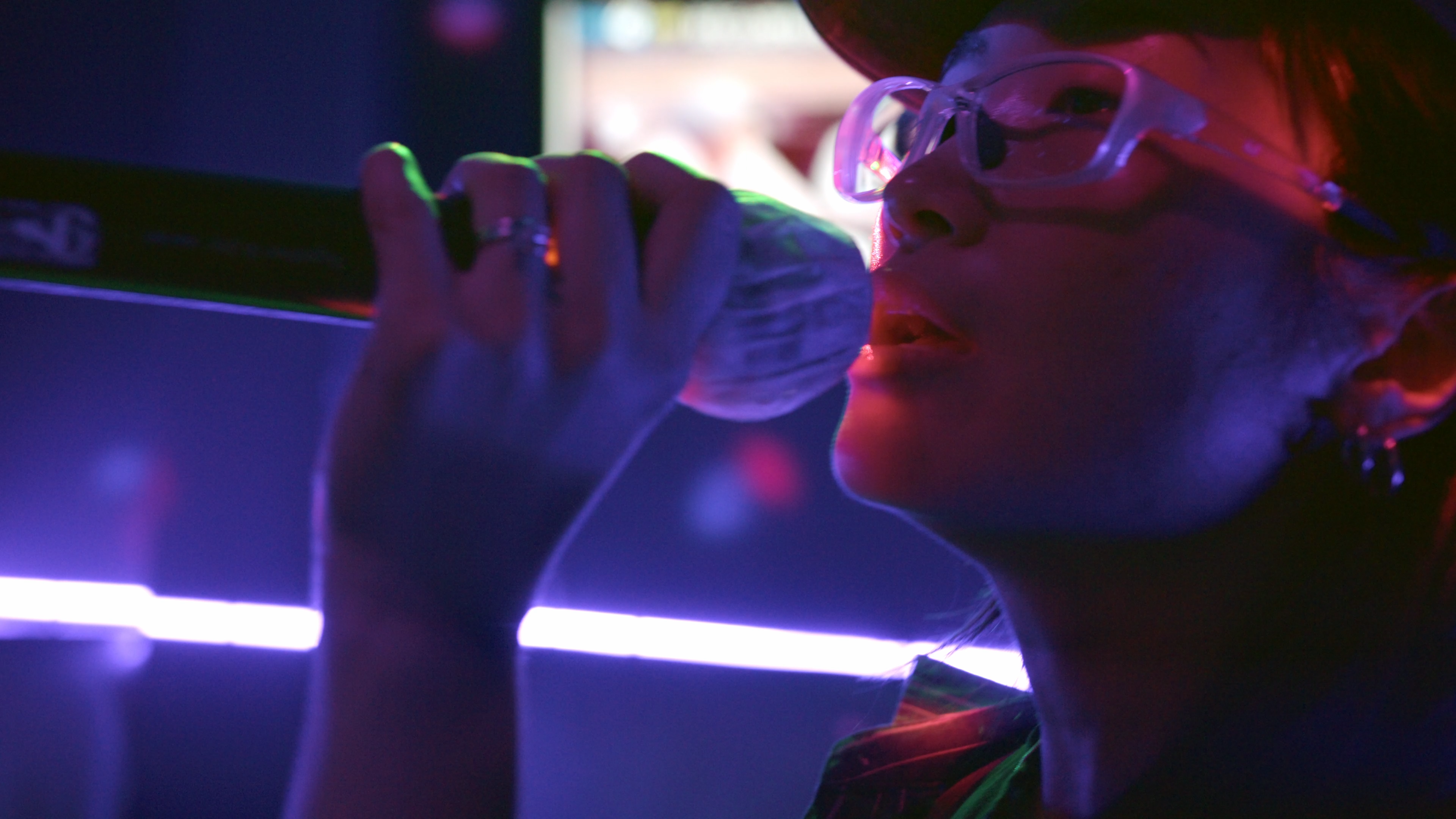Listening Guests
2025
Single-channel video, multi-channel (or stereo) sound
38 minutes
Listening Guests begins with the belief that a distinct mode of listening exists shaped by the experiences and histories of diaspora. It explores the complex relationships diasporic communities form with listening through language, music, and various aural events in daily life. Diasporic senses are closely tied to identities shaped within the shifting dynamics between the homeland, the host country, and diaspora communities. As these three spheres are in constant flux, diasporic communities negotiate and mediate their positions within changing political and economic contexts and varying degrees of access to cultural resources. In doing so, they cultivate unique listening practices and ethics that reflect the particular spatiotemporality of diasporic life.
To explore this diasporic listening, the work focuses on two communities: the Koryoin (ethnic Koreans from the former Soviet Union) community in Korea, and Korean immigrant community in Los Angeles. The first generation of Koryoin largely migrated to the Russian Far East during the Japanese occupation in search of better prospects, only to be forcibly relocated to Central Asia under Stalin’s regime. The Koryoin living in Korea today are mostly descendants of those who returned in the 1990s, seeking improved economic opportunities, with the majority now being primarily second to fourth-generation immigrants. They partake in cultural content from Korea, Russia, and various other regions. The history of Koreans’ mass immigration to the U.S. began in the early 20th century. The number of Korean laborers migrating to Hawaii as farm workers had drastically increased by 1905, competing with Japanese laborers who had already settled down in the island. After the Korean War in the 1950s, masses of war orphans were adopted to the U.S., and highly degreed Koreans who already resided in the U.S. for study purposes determined not to return to their homeland. The revision of the Immigration Act in 1965 resulted in a precipitous increase in Korean emigration; 22% of Korean immigrants ended up settling in the Los Angeles area as of 2005.
In this work, I examine how their listening practices are shaped through processes of relocation and adjustment, and I investigate the power and potential of sound and listening in forming migrant experiences. The film is structured around questions that explore language acquisition, musical production and consumption, and everyday aural events. These questions emerged from an engagement with “sonic ethnography,” a methodology that foregrounds the role of sound and listening within ethnographic narratives. This approach engages the ethnographic potential of sound by attending to sonic environments and by employing process-oriented modes of sound documentation.
(KR)
2025
Single-channel video, multi-channel (or stereo) sound
38 minutes
Listening Guests begins with the belief that a distinct mode of listening exists shaped by the experiences and histories of diaspora. It explores the complex relationships diasporic communities form with listening through language, music, and various aural events in daily life. Diasporic senses are closely tied to identities shaped within the shifting dynamics between the homeland, the host country, and diaspora communities. As these three spheres are in constant flux, diasporic communities negotiate and mediate their positions within changing political and economic contexts and varying degrees of access to cultural resources. In doing so, they cultivate unique listening practices and ethics that reflect the particular spatiotemporality of diasporic life.
To explore this diasporic listening, the work focuses on two communities: the Koryoin (ethnic Koreans from the former Soviet Union) community in Korea, and Korean immigrant community in Los Angeles. The first generation of Koryoin largely migrated to the Russian Far East during the Japanese occupation in search of better prospects, only to be forcibly relocated to Central Asia under Stalin’s regime. The Koryoin living in Korea today are mostly descendants of those who returned in the 1990s, seeking improved economic opportunities, with the majority now being primarily second to fourth-generation immigrants. They partake in cultural content from Korea, Russia, and various other regions. The history of Koreans’ mass immigration to the U.S. began in the early 20th century. The number of Korean laborers migrating to Hawaii as farm workers had drastically increased by 1905, competing with Japanese laborers who had already settled down in the island. After the Korean War in the 1950s, masses of war orphans were adopted to the U.S., and highly degreed Koreans who already resided in the U.S. for study purposes determined not to return to their homeland. The revision of the Immigration Act in 1965 resulted in a precipitous increase in Korean emigration; 22% of Korean immigrants ended up settling in the Los Angeles area as of 2005.
In this work, I examine how their listening practices are shaped through processes of relocation and adjustment, and I investigate the power and potential of sound and listening in forming migrant experiences. The film is structured around questions that explore language acquisition, musical production and consumption, and everyday aural events. These questions emerged from an engagement with “sonic ethnography,” a methodology that foregrounds the role of sound and listening within ethnographic narratives. This approach engages the ethnographic potential of sound by attending to sonic environments and by employing process-oriented modes of sound documentation.
(KR)







#1-2
Exhibition view of Korea Artist Prize (National Museum of Modern and Contemporary of Art, Korea, Seoul, 2025). Image courtesy of National Museum of Modern and Contemporary Art, Korea. Photo: Chulki Hong.
#3-7
Video still.
Trailer